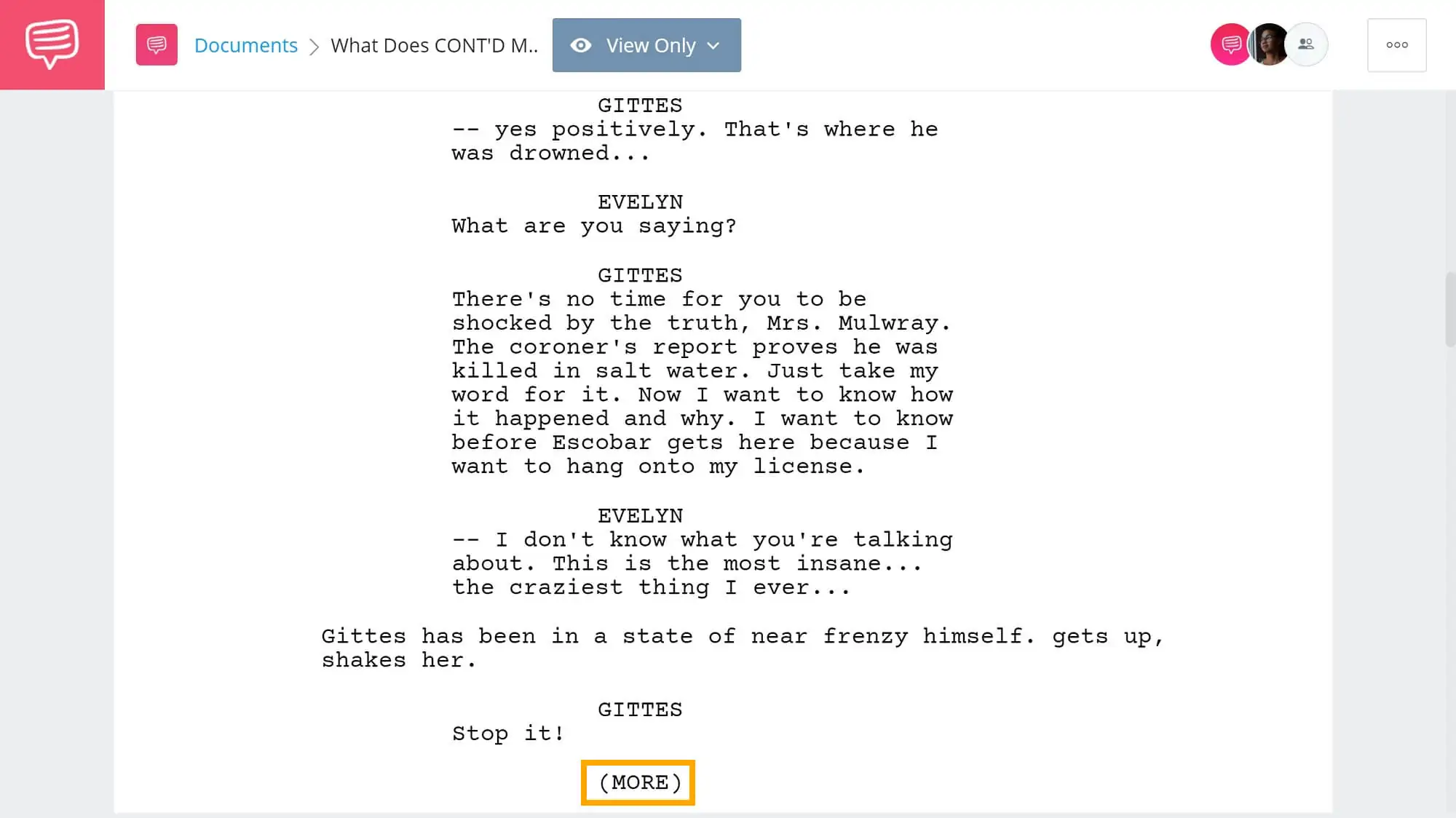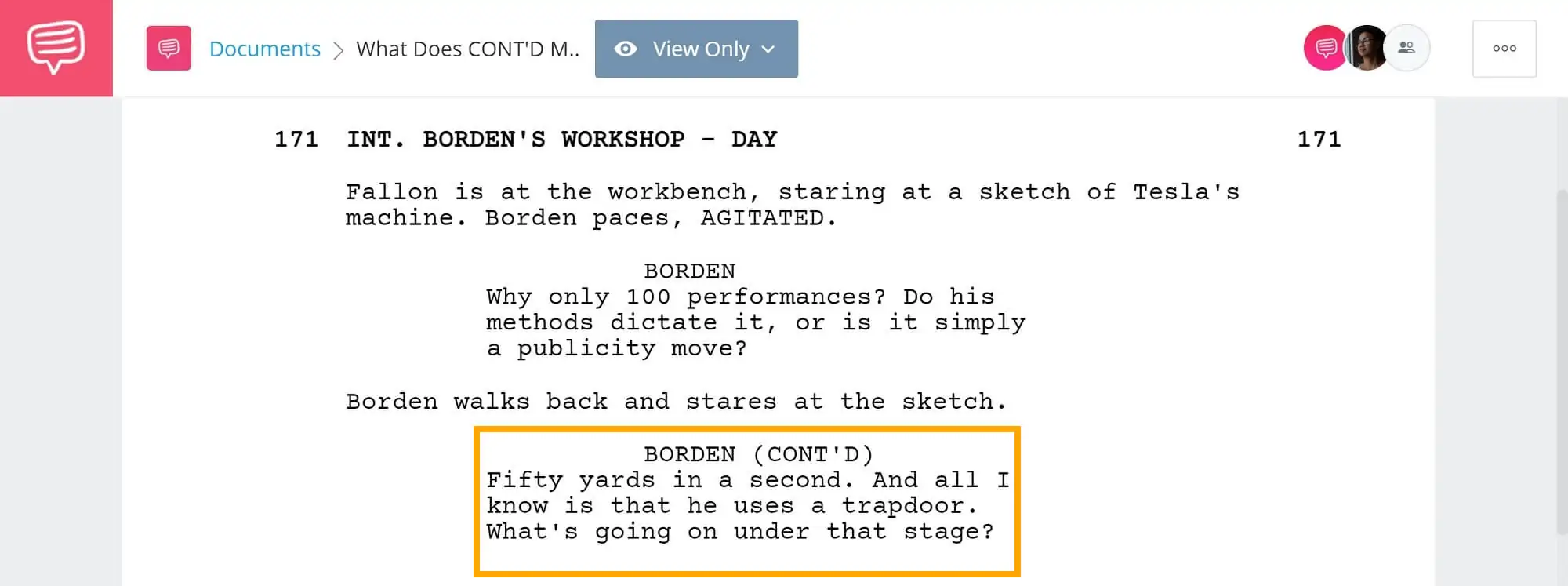MORE and CONT’D are dialogue transitions that are used to mark the continuation of characters speaking in a screenplay. We’re going to show you how to use MORE and CONT’D with screenplay examples – and then we’ll explain when you should use them in your own scripts.
Screenplay Abbreviations Explained
What does CONT’D mean?
Screenplays require fairly rigorous formatting. That’s not to say they should be intimidating though. Quite the contrary — whether you’re just getting the hang of screenwriting or brushing up on the basics, you should check out our guide on how to master screenplay format.
In screenwriting, MORE and CONT’D are parentheticals; which is a fancy way to say they’re written in parentheses. In a script, you’ll always see the terms in parentheses. In this article, we’re going to ditch the parentheses – just remember that they should be there in the script.
MORE is used when a character is speaking but the page runs out of room before they’re finished. We imported the Chinatown screenplay into StudioBinder’s screenwriting software to take a closer look at how MORE should look in an industry standard script.
Film Script Conventions • Read MORE in the Chinatown Screenplay
Perhaps it’s helpful to think of it this way — whenever MORE is used, it’s the last thing you see on the page; and CONT’D is there to follow. Let’s break it down step-by-step:
- MORE is used at the bottom of a page when a character is speaking but there’s not enough room for them to finish.
- The first line of the next page should start with the continuation of the dialogue.
- CONT’D (an abbreviation for continued) should be written next to the character’s name to indicate that their speech is continued.
Film Script Conventions • CONT’D is the Abbreviation for Continued in The Prestige
CONT’D can also be used when a character is speaking — followed by an action line — then they continue speaking. Christopher and Jonathan Nolan often use CONT’D in this way. So the moral of the story is MORE always needs CONT’D but CONT’D doesn’t always need MORE.
CONT'D & Film Script Conventions
How to Use MORE and CONT’D
Remember our example from The Prestige? How Borden’s second chunk of dialogue had CONT’D next to it? Some industry professionals don’t like when CONT’D is used to indicate the same character is speaking after an action line. My opinion is that if Christopher and Jonathan Nolan are using CONT’D like that, why shouldn’t you?
Screenwriters sometimes get crazy with formatting stringency – but don’t let that intimidate you from writing a script. The truth is that a good story will always be a good story, regardless of how you apply these screenplay abbreviations.
Here’s how to write continued after an action line:
How to Write Continued After an Action Line
These screenplay abbreviations don’t have to be written in all-caps either. Here are a few different ways MORE and CONT’D can look in screenplays:
- (MORE)
- (more)
- (CONT’D)
- (cont’d)
One more note: don’t confuse CONT’D with CONTINUOUS. CONTINUOUS is used in sluglines to indicate ongoing action in a script.
Now that we’ve broken down a variety of different ways to use these screenplay abbreviations, why don’t you try it with your own script?
UP NEXT
How to Format a Script
We've covered just two screenplay abbreviations of properly formatting a screenplay — there are dozens more. In this next article, we break down script formatting in further detail, with slugline, character, and dialogue examples. You can use this article throughout your writing process to reference key formatting notes!


